The Huawei Mate 30 Pro Review: Top Hardware without Google?
by Andrei Frumusanu on November 27, 2019 10:00 AM EST- Posted in
- Mobile
- Smartphones
- Huawei
- Kirin 990
- Mate 30 Pro
Camera - Daylight Evaluation
The Mate 30 Pro camera is both boring as well as exciting in terms of what it offers. The boring part is that the main camera sensor as well as telephoto modules don’t differ from what we’ve seen in the P30 – there’s still a 40MP RYYB sensor which promises to be optimised for low-light captures, and the 3x telephoto module should be pretty competitive and represent a balanced implementation between the traditional 2x units as well as the more compromising prism-based 5x telephoto modules.
The exciting part of the new camera system is the fact that we’re seeing a brand-new ultra-wide-angle camera module at coming in at 40MP. This is a regular Bayer colour filter sensor and also a brand-new sensor we haven’t seen employed before. Huawei did sacrifice some of the field-of-view capabilities of the optics in order to implement the new sensor and as such it’s not quite as wide as other UWA cameras out there. Resolution also took a hit as in the usual capturing mode the camera will be producing 10MP pictures – down from 16MP that we saw in previous high-end Huawei flagships.
A wildcard in the whole evaluation will be the new Kirin 990’s processing abilities and how Huawei has been able to calibrate the cameras on the new chipset platform.
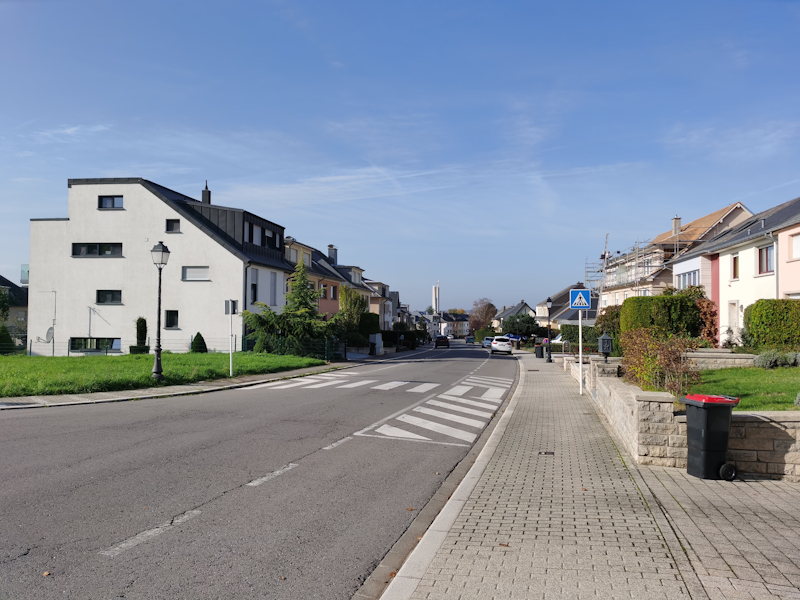
[ Mate 30 Pro ] - [ P30 Pro ]
[ Galaxy S10+ (S) ] - [ Galaxy S10+ (E) ]
[ iPhone 11 Pro ] - [ Pixel 4 ]
[ G8X ] - [ Xperia 1 ]
Starting off with the first scene, let’s first look at the difference in processing between the Mate 30 Pro and the P30 Pro. We first note that the Mate 30 Pro is producing a brighter picture, but that’s actually a good aspect as it was a clear sky with the sun out in the scene. I would even say that it’s still a bit dark as highlights such as the white façade of the building on the left even though it’s in direct sunlight has very suppressed highlights – there’s very little content in the last 10% of brightness of the scene. Overall, it looks like a different HDR implementation with differences in tone-mapping.
Another big difference between the two is in the details: The Mate 30 Pro has much higher fidelity in the details and the textures are a lot more naturally sharp as a result. In fact, this was one of the gripes I had with the P30’s new camera sensor and I wasn’t sure if it was something to blame on the sensor or rather Huawei’s processing. The Mate 30 Pro here proves that it was an issue of the processing rather than the hardware.
Switching over to the wide-angle, the one thing that immediately is apparent is the colour temperature. It’s just too warm and it’s being just inaccurate.
Dynamic range compared to other UWA modules from both Huawei and the competition is just vastly superior as we’re seeing better shadow retention. In terms of detail, although it’s a resolution downgrade, the actual spatial resolution of elements being captured in the scene is by far the highest on the Mate 30 Pro. Other phones have to make due with smaller sensors and here the Mate 30 Pro just wins out by brute force.
The reduced viewing angle isn’t too large in the horizontal plane, however it’s very notable that the camera cuts off a lot of content in the vertical due to its native 16:9 sensor aspect ratio.
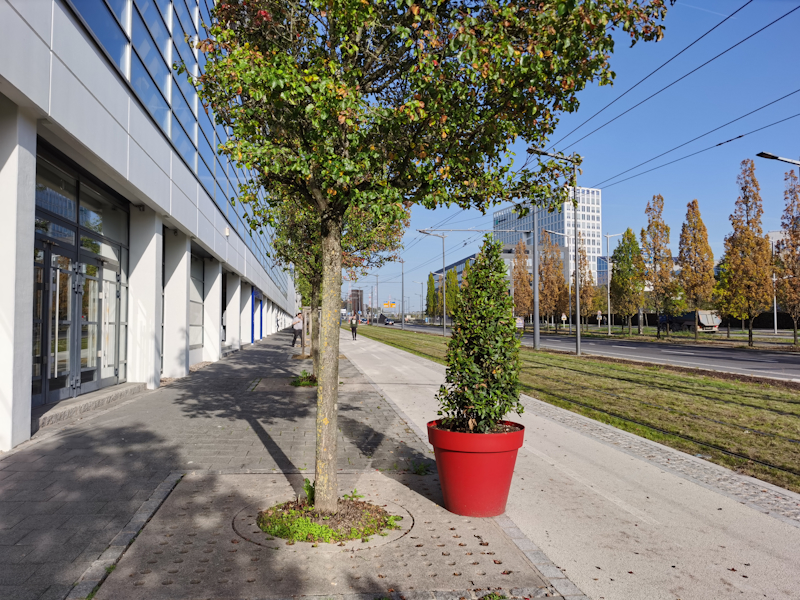
[ Mate 30 Pro ] - [ P30 Pro ]
[ Galaxy S10+ (S) ] - [ Galaxy S10+ (E) ]
[ iPhone 11 Pro ] - [ Pixel 4 ]
[ G8X ] - [ Xperia 1 ]
In the next shot, I like the Mate 30 Pro’s handling of the highlights of the leaves in the trees as they’re brighter and more accurate to the scene, however the tone mapping of some of the other textures in the scene seem a bit off and flat. Detail again is excellent thanks to not having a sharpening filter being applied.
The wide angle is again excellent, although this time around it’s more of a die in terms of detail between the new sensor and the P30 Pro’s 20MP unit.
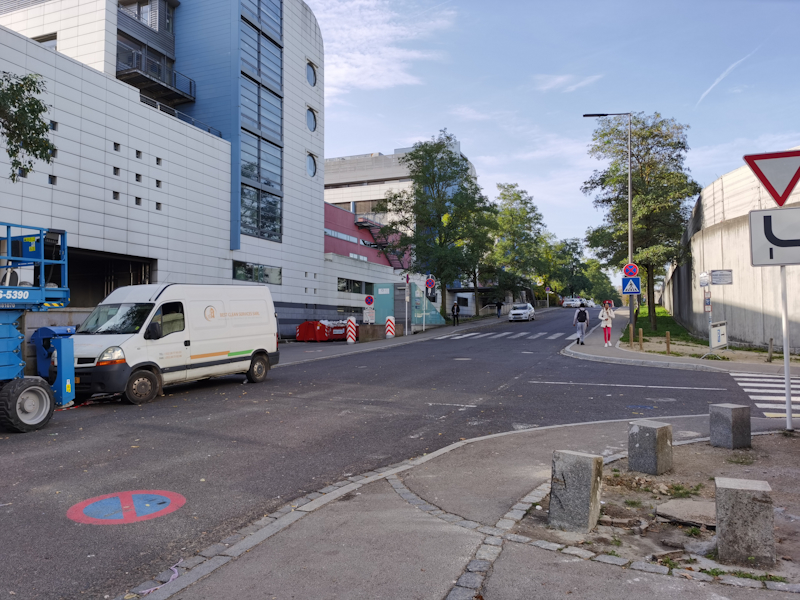
[ Mate 30 Pro ] - [ P30 Pro ]
[ Galaxy S10+ (S) ] - [ Galaxy S10+ (E) ]
[ iPhone 11 Pro ] - [ Pixel 4 ]
[ G8X ] - [ Xperia 1 ]
This shot again exhibits the HDR difference between the two Huawei phones. The Mate 30 Pro’s shot is a bit brighter and has better dynamic range, but also is a bit flatter on textures and isn’t able to bring out quite as much contrast compared to the local tone mapping of the P30 Pro.
Detail again is a massive win on the Mate 30 Pro as no applying sharpening results in a much more natural looking pictures and we’re seeing a lot more detail in the leaves of the trees.
The wide angle in terms of processing is similar to the P30 Pro, but has again more details albeit in a more limited picture frame.

[ Mate 30 Pro ] - [ P30 Pro ]
[ Galaxy S10+ (S) ] - [ Galaxy S10+ (E) ]
[ iPhone 11 Pro ] - [ Pixel 4 ]
[ G8X ] - [ Xperia 1 ]
In challenging scenes such as when shooting with the sun in the frame, the phone’s HDR limitations are more visible and we’re not seeing too much differences to the P30. The pictures are a bit darker even and the phones still fall behind Samsung’s wider dynamic range implementation.
The UWA’s details are ahead of any other such module, but falls behind in terms of dynamic range and colours, with Samsung still being considerably better in this regard.
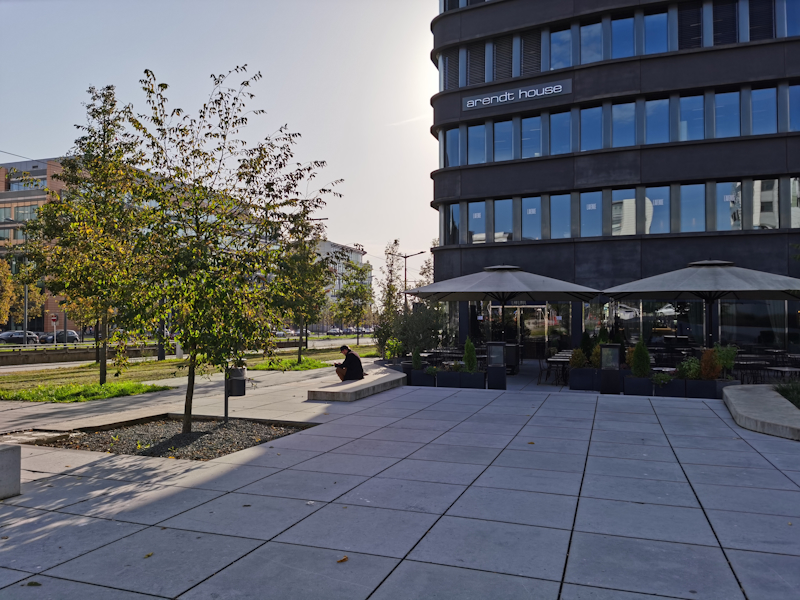
[ Mate 30 Pro ] - [ P30 Pro ]
[ Galaxy S10+ (S) ] - [ Galaxy S10+ (E) ]
[ iPhone 11 Pro ] - [ Pixel 4 ]
[ G8X ] - [ Xperia 1 ]
The dynamic range improves a bit on the Mate 30 Pro, but again falls behind some of the newer phones such as the iPhone 11 which has amongst the best shots of this challenging scene.
The UWA’s shot is excellent and again ups the bar in terms of what we’re seeing from modules of this class. I do find it a pity that the viewing angles are a bit more limited now.
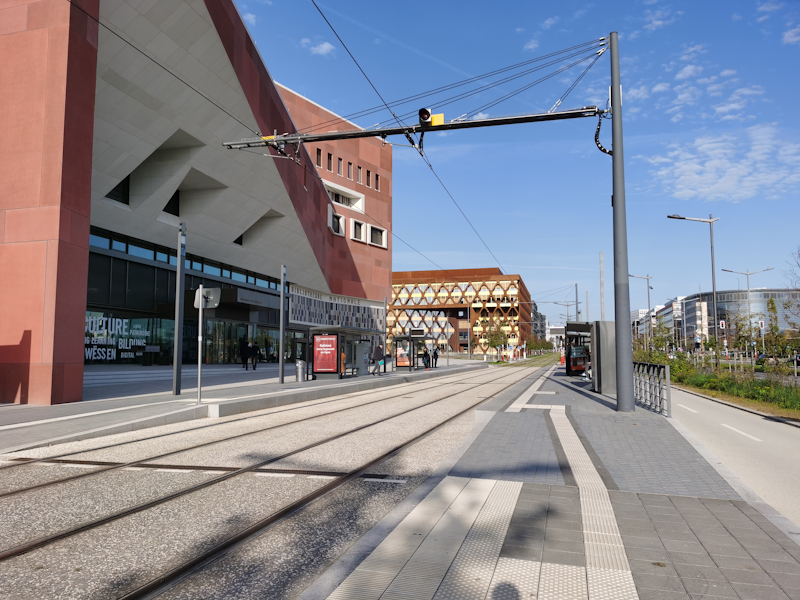
[ Mate 30 Pro ] - [ P30 Pro ]
[ Galaxy S10+ (S) ] - [ Galaxy S10+ (E) ]
[ iPhone 11 Pro ] - [ Pixel 4 ]
[ G8X ] - [ Xperia 1 ]
In easier scenarios such as shooting away from the sun, the Mate 30 Pro behaves more similar to the P30 Pro and other phones. Big difference against the predecessor flagship is the detail which is maintained on the Mate 30 Pro.
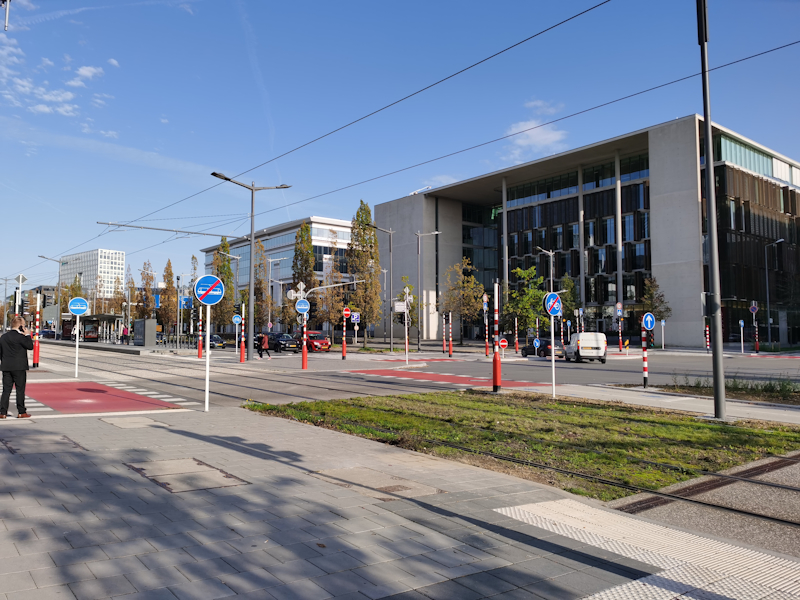
[ Mate 30 Pro ] - [ P30 Pro ]
[ Galaxy S10+ (S) ] - [ Galaxy S10+ (E) ]
[ iPhone 11 Pro ] - [ Pixel 4 ]
[ G8X ]
Comparing the Mate 30 Pro’s shot against any other phone the biggest strength is again the near pixel-perfect sharpness and retention of details that is far ahead of any other phone. The HDR and local tone-mapping feels a little flatter in some elements such as the pavement, but I’m not sure if I should see this a more natural look or if it’s simply making things flatter than they should be.
This is also visible in the wide-angle camera where I would actually prefer the P30 Pro’s processing as it’s able to better maintain highlights of the scene, giving the pavement more texture and depth.
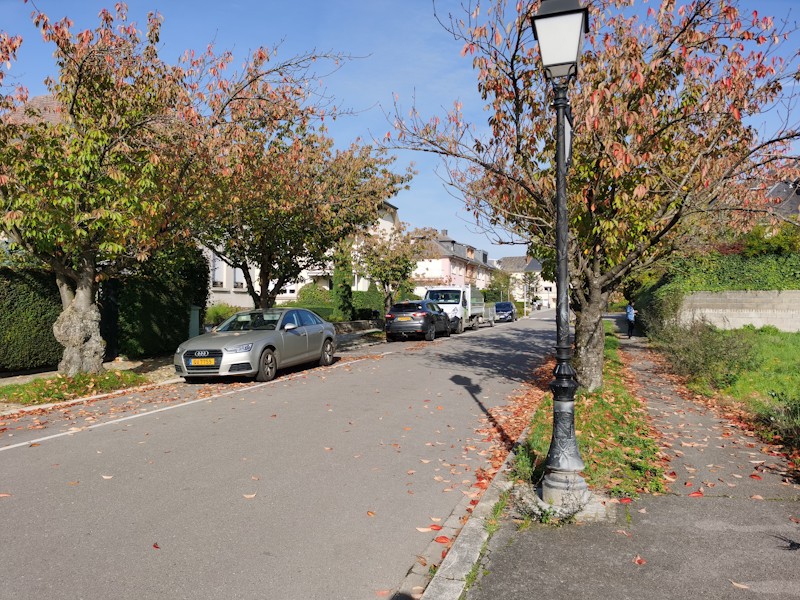
[ Mate 30 Pro ] - [ P30 Pro ]
[ Galaxy S10+ (S) ] - [ Galaxy S10+ (E) ]
[ iPhone 11 Pro ] - [ Pixel 4 ]
[ G8X ] - [ Xperia 1 ]
Excellent detail showing by the Huawei phone, but yet again I feel like there’s an aspect of flatness in the picture as the local tone-mapping is being too linear. Comparing the shot to the iPhone 11 I feel like Huawei is losing notion of depth, particularly visible in the road’s curvature as well as in the grass on the right.
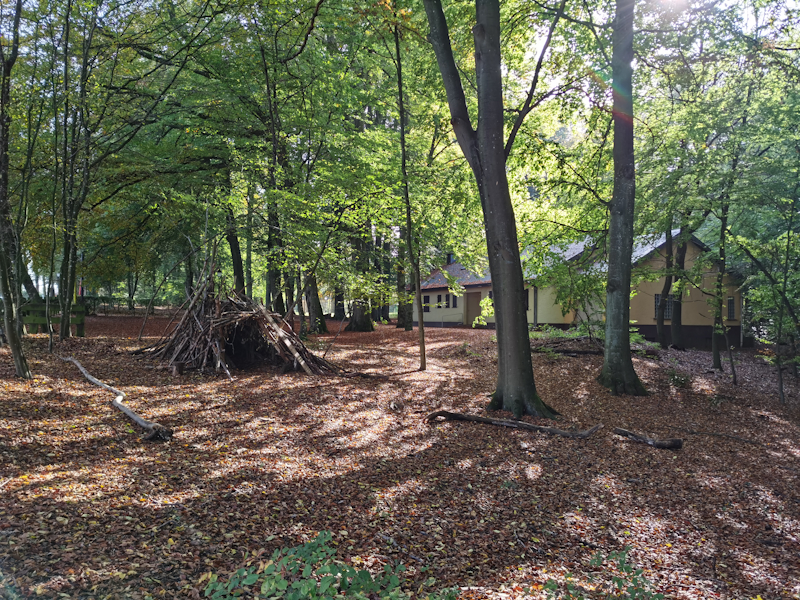
[ Mate 30 Pro ] - [ P30 Pro ]
[ Galaxy S10+ (S) ] - [ Galaxy S10+ (E) ]
[ iPhone 11 Pro ] - [ Pixel 4 ]
[ G8X ] - [ Xperia 1 ]
Next shot is challenging colour temperature wise for a lot of phones. The Mate 30 Pro is more gray than the P30 Pro and this is actually a mistake for the new phone. Where the phone again shines is in terms of detail as it’s by far the best performing device out of the comparison lineup. Dynamic range is also excellent.
This is a scene where the new UWA’s sensor did fantastically and the amount of detail captured is far above that of any other phone. Colour temperature and exposure are excellent.
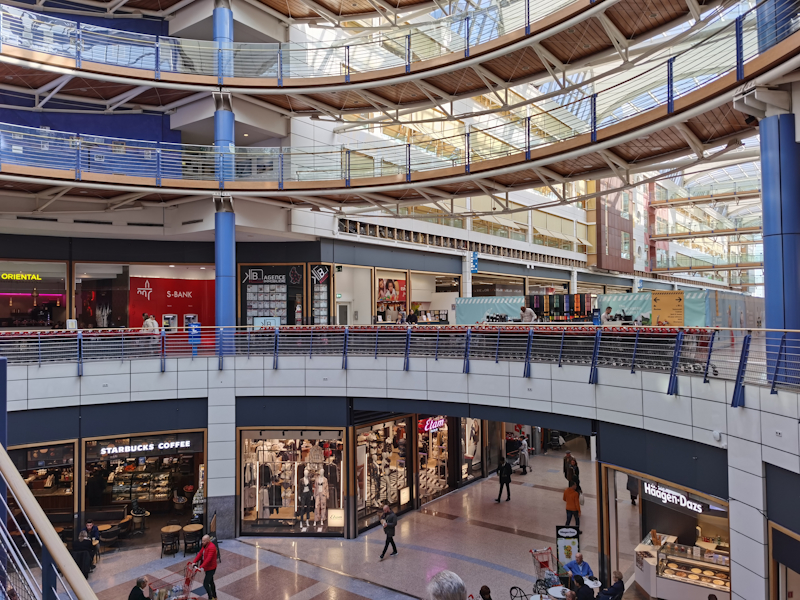
[ Mate 30 Pro ] - [ P30 Pro ]
[ Galaxy S10+ (S) ] - [ Galaxy S10+ (E) ]
[ iPhone 11 Pro ] - [ Pixel 4 ]
[ G8X ] - [ Xperia 1 ]
Not too big differences in exposure for indoor shots compared to the P30 Pro. The Mate did fare better with the more accurate colder colour temperature, and again much better details.
The UWA is excellent, however it’s in scenes like these where you’ll be missing having the more vertical space of a 4:3 sensor instead of the more cut-off 16:9 aspect ratio of the Mate 30 Pro’s unit, so while not being as detailed or as good dynamic range, I would prefer having the P30 Pro’s module here.
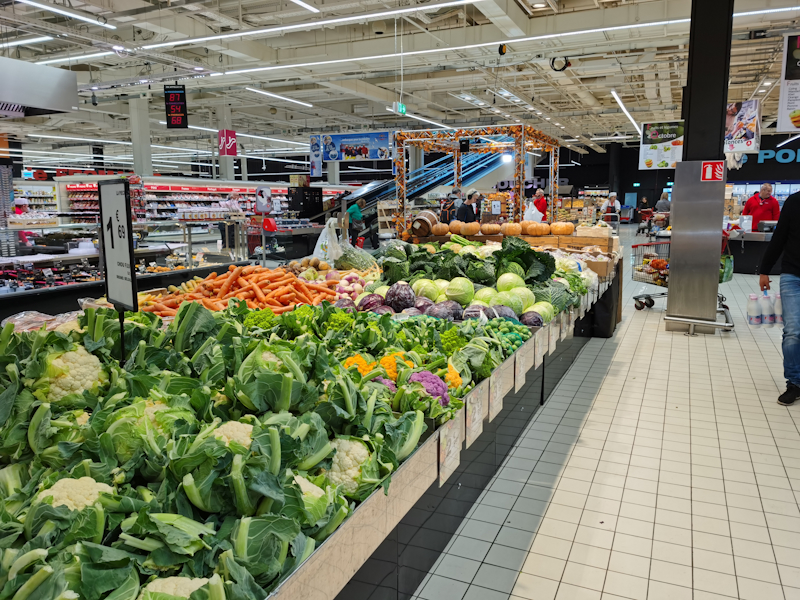
[ Mate 30 Pro ] - [ P30 Pro ]
[ Galaxy S10+ (S) ] - [ Galaxy S10+ (E) ]
[ iPhone 11 Pro ] - [ Pixel 4 ]
[ G8X ] - [ Xperia 1 ]
Here we see another aspect of the relatively too aggressive tone-mapping of the HDR on the Mate 30 Pro. We see it flattening some of the highlights in the cauliflower heads making them appear to lose depth, something we saw in most of the scenes in the comparisons today.
Camera Daylight Conclusion
Overall the camera performance of the Mate 30 Pro in daylight is excellent, albeit it has a few hiccups here and there.
On the main camera, we’re seeing a few changes compared to the P30 series even though it’s the same camera sensor. Huawei had done away with the sharpening processing that was present on those models, reverting back and actually beating the detail retention we saw on the Mate 20 Pro. In fact, the new detail retention we’re seeing on the Mate 30 Pro is pretty much outstanding and the best we’re seeing on any smartphone camera out there today.
The change to a new SoC and ISP did see some changes in the processing style of the new photos. Sometimes it’s similar to the P30, but more often than not I feel like it just looks flatter. The tone-mapping of highlights is a tad too aggressive and this results in textures being less pronounced and objects sometimes losing depth. In general, I can’t say that HDR has improved all too much this generation for Huawei – Samsung still has more raw dynamic range and Apple has the best and most balanced approach.
The new ultra-wide-angle module is a step-function increase in capture quality compared to previous generation modules. Whilst Huawei’s 20MP UWA unit was amongst the best in terms of detail in the past, the new 40MP sensor beats it even though it produces 10MP images now, and the rest of the competition can’t really keep up either. The negative of the new sensor however is that it’s a smaller field-of-view than before. The horizontal reduction isn’t too bad, but because it’s now a 3:2 instead of a 4:3 sensor it means framing in the vertical is a lot more limited now.
The 3x telephoto module is in line with what we’ve seen in the past, it has a bit limited dynamic range sometimes, but detail is excellent and short of the 5x telephoto units out there, is ahead of any other 2x unit and beats even software trickery by phones such as the Pixel 4.
The Mate 30 Pro camera is very competitive, although I wished some bigger improvements this year in terms of the HDR processing capabilities.


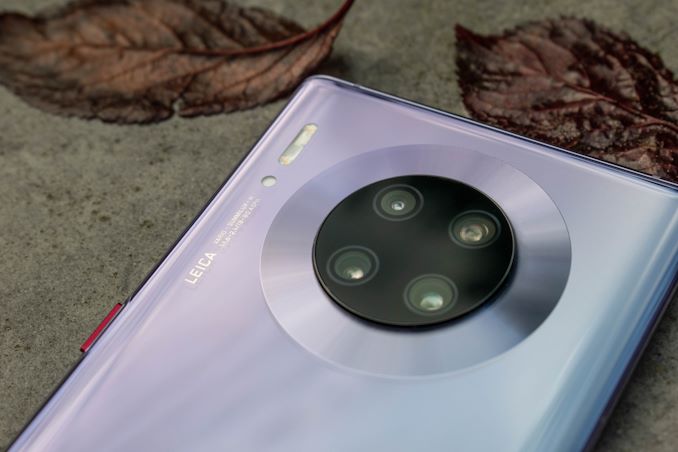








58 Comments
View All Comments
psychobriggsy - Wednesday, November 27, 2019 - link
After years on Android, and a set of Android Apps and Services that I own via the Play Store (or because they come with the phone), the lack of Google Services and the Play Store is a critical piece of missing functionality.Indeed I'd say that this is not Android at all, Android for most people being the combination of core operating system and Google Services.
imaheadcase - Wednesday, November 27, 2019 - link
Exactly, the whole point of a android phone is to have google services. Anything else you are are developers whim in updates to OS and apps. Which if anyone who got burned by Samsung tablets know..its not pretty.prisonerX - Wednesday, November 27, 2019 - link
There's something to be said for there being an alternative to the Google monopoly in that respect. Let's hope that something like that emerges from this fiasco.versesuvius - Thursday, November 28, 2019 - link
Vendor lock-in does not even begin to describe what the US government is enforcing on the mobile phone users around the world. If at one time it was Apple or Microsoft or some other OS maker, now it is a political and economical system that the US government and Google want to lock the world in. That said, a mobile phone is nothing but Browser as OS. And the entire Google offering is nothing but open web technologies. The half hearthed attempts at something different from Google never added up to much because they always chose Google to fall back on from the get go. With Huawei on the one side and the general drift of the Western world towards Trumpism and the asinine single mindedness of what passes for American political and economical infrastructure, we are going to witness many wonderful shifts towards true freedom and innovation around the world and Huawei is just a very wonderful start.melgross - Sunday, December 1, 2019 - link
I hope Huawei has problems. The Chinese have been stealing secrets for some time, and Huawei is benefiting from that. In fact, early this year, two Apple vendors in China stated that they had been approached by Huawei for just that purpose.I have no sympathy for them.
shabby - Wednesday, November 27, 2019 - link
The round ring on this phone looks amazing, wish more phones had that kind of ring.yetanotherhuman - Thursday, November 28, 2019 - link
Reminds me of my old Sony Ericsson P990, with the little selfie mirror :Dyetanotherhuman - Thursday, November 28, 2019 - link
oh, and the actual physical protection for the lens.s.yu - Thursday, November 28, 2019 - link
...are you being sarcastic? This looks so last-decade-compact sort of cliché.Also many are commenting that it looks like a stove.
Alistair - Wednesday, November 27, 2019 - link
Can't me in the group that detests curved screens. Don't copy Samsung's mistakes. Every time I use a flat version, it feels and looks much better. Even the S10e vs the S10, or the Oneplus 7T vs 7 Pro, much better.